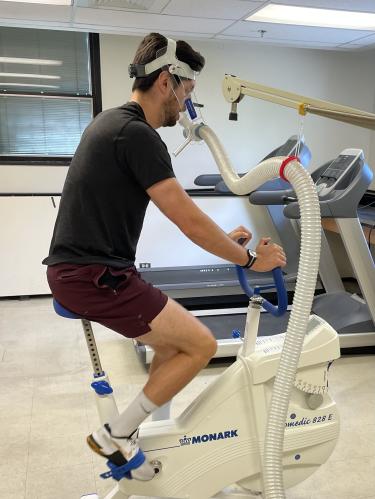Cardiorespiratory Function

Project Overview
This study examines hemoglobin mass, lean muscle mass, skeletal muscle oxidative capacity, and glucose tolerance before and after plasticity-priming interventions such as acute intermittent hypoxia (AIH). Understanding how these measures of cardiorespiratory fitness adapt to neuromodulatory interventions may provide insights into strategies for improving metabolic and functional outcomes in individuals with impaired mobility.
Assessing Cardiorespiratory Adaptation
In this study, we assess the following physiological measures:
- Total hemoglobin mass: Represents the blood’s oxygen-carrying capacity and is measured using a validated rebreathing procedure.
- Lean muscle mass: Measured via dual x-ray absorptiometry (DXA) scan to assess body composition.
- Skeletal muscle oxidative capacity: Evaluated using near-infrared spectroscopy (NIRS) to determine the efficiency of mitochondrial ATP production and oxygen utilization in skeletal muscle.
- Glucose tolerance: Assessed through blood glucose analysis following a standardized glucose tolerance test to evaluate metabolic regulation.
Significance
This study will determine whether various plasticity-priming interventions improve oxidative metabolism, oxygen transport capacity, and metabolic efficiency. Enhancements in these parameters may contribute to better muscle recovery, endurance, and overall metabolic health. Following spinal cord injury (SCI), autonomic dysfunction and muscle phenotype shifts contribute to secondary health complications such as type 2 diabetes and cardiovascular disease. Given the significant mobility reductions post-SCI, understanding cardiorespiratory adaptations is important for optimizing rehabilitation strategies.

